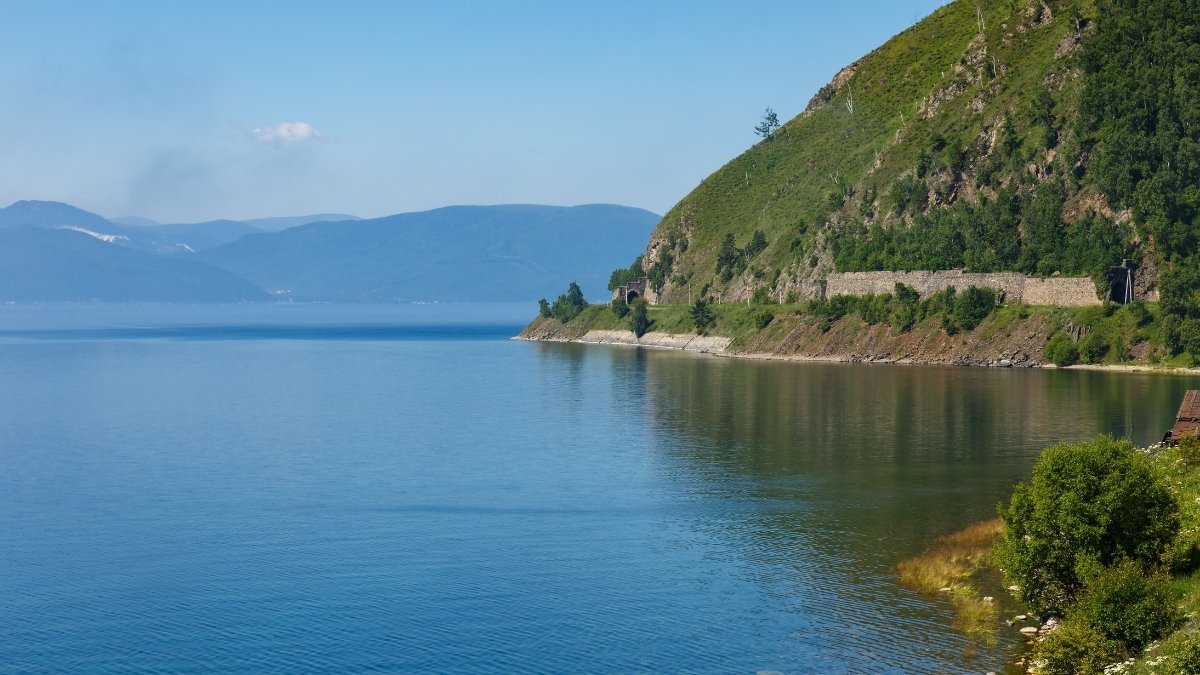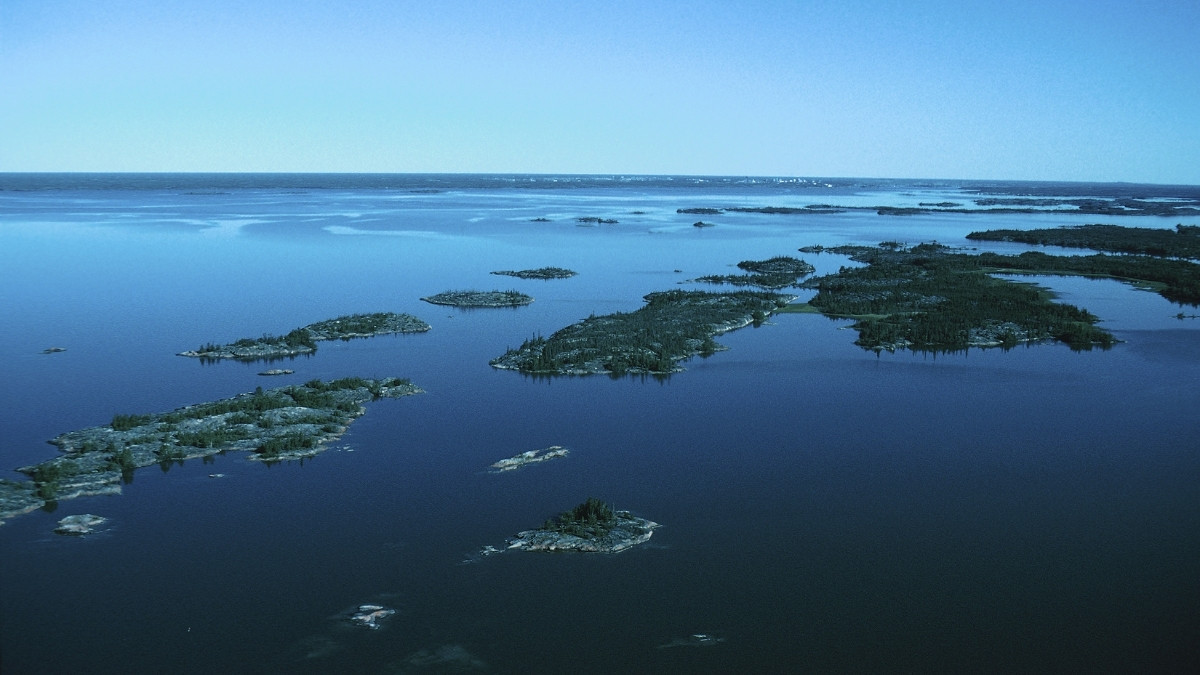Key Points
- Lake Baikal is the world's deepest and oldest freshwater lake.
- The list includes both freshwater and saltwater lakes from different continents.
- Geological marvels reveal unique ecosystems in these aquatic giants.
Deepest lakes in the world: A new exploration takes us from the Siberian wilderness to the heart of Africa, where we learn about the amazing depths and secrets of the world's deepest bodies of water. Scientists are using advanced sonar technology and deep-water submersibles to map these huge bodies of water. This is revealing unique ecosystems and ancient life forms that people have never seen before.
It's more important than ever to learn about the world's deepest lakes, which hold a lot of our freshwater, because climate change is affecting even the most remote places. Thi list takes you to the world's deepest lakes, where you can see how big they are and how fragile the plants and animals that live there are.
Which are the Deepest Lakes in the World?
It's easier to understand how big these lakes are if you can picture how deep they are. Imagine stacking some of the world's tallest buildings or natural landmarks in them—you'd still be far from reaching the surface! Here is a table with a brief description of each of the five deepest lakes on Earth.
| Rank | Name of Deepest Lake | Location | Maximum Depth |
| 1 | Lake Baikal | Russia | 1,642 m (5,387 ft) |
| 2 | Lake Tanganyika | Tanzania, DR Congo, Burundi, Zambia | 1,470 m (4,823 ft) |
| 3 | Caspian Sea | Russia, Iran, Kazakhstan, Turkmenistan, Azerbaijan | 1,025 m (3,363 ft) |
| 4 | Lake Vostok | Antarctica | 900 m (2,950 ft) |
| 5 | O'Higgins-San Martín Lake | Chile & Argentina | 836 m (2,742 ft) |
| 6 | Lake Malawi | Malawi, Mozambique, Tanzania | 706 m (2,316 ft) |
| 7 | Lake Issyk-Kul | Kyrgyzstan | 668 m (2,192 ft) |
| 8 | Great Slave Lake | Canada | 614 m (2,015 ft) |
| 9 | Crater Lake | United States | 594 m (1,949 ft) |
Also Read - List of 7 Most Colourful Mountains in the World (Updated)
1. Lake Baikal, Russia

Lake Baikal in Russia is the world's largest natural wonder and holds the record for the most. It is not only the world's deepest lake at a depth of 1,642 meters (5,387 ft), but it is also the world's largest freshwater lake by volume, holding an amazing 22–25% of the world's total unfrozen freshwater. Because it is so old and isolated, it has a unique ecosystem with thousands of species that are only found there and nowhere else on Earth.
2. Lake Tanganyika, Africa

At 1,470 meters (4,823 feet), Lake Tanganyika is the second-deepest lake in the world. It is in the Great Rift Valley and crosses four countries. It has a lot of different plants and animals, and is the longest freshwater lake in the world. Its great depth and ancient origin have made it a key place to study how species have changed over time, especially its cichlid fish population, which has more than 250 known endemic species.
3. Caspian Sea, Eurasia

Often mistaken for a sea, the Caspian Sea is the world's largest inland lake by surface area and ranks as the third-deepest lake. The deepest part of this big saltwater lake is 1,025 meters (3,363 feet). It used to be part of an ocean. It shares a border with five other countries, and its unique ecosystem is home to many different kinds of animals, such as the endangered Caspian seal and a lot of sturgeon.
4. Lake Vostok, Antarctica

The fact that Lake Vostok is covered by almost 4 kilometers (2.5 miles) of ice makes it a real mystery. This subglacial lake is the biggest of its kind. Its deepest point is about 900 meters (2,950 feet) deep. It has been cut off from the surface for millions of years, which makes it very interesting to scientists because they might find unique and ancient life forms in its clean, isolated waters.
5. O'Higgins-San Martín Lake, Patagonia

The O'Higgins-San Martín Lake, which is shared by Chile and Argentina, is the fifth-deepest lake in the world, with a depth of 836 meters (2,742 feet). The "rock flour" that makes up the fine sediment around it gives it its unique milky-turquoise color. It is also the deepest lake in the Americas, which shows how strong the glaciers were that carved its fjord-like arms.
6. Lake Malawi, Africa

Lake Malawi is the sixth-deepest lake in the world, with a maximum depth of 706 meters (2,316 feet). It is in the Great Rift Valley. It is home to more fish species than any other lake, especially a lot of colorful cichlids. It is known for its amazing biodiversity. People like to do research and visit the lake because its waters are clear and warm.
7. Lake Issyk-Kul, Kyrgyzstan

Lake Issyk-Kul is also one of the world's deepest lakes, with a depth of 668 meters (2,192 feet). It is up in the Tian Shan mountains. The name "hot lake" comes from the fact that it never freezes, even though it is at a high altitude and surrounded by snow-capped mountains. Because the water in the lake is deep and salty, it doesn't freeze.
8. Great Slave Lake, Canada

Canada's Great Slave Lake is the deepest lake in North America, with a maximum depth of 614 meters (2,015 ft). It is a very important part of the landscape in the Northwest Territories. In the winter, the surface freezes and becomes an ice road. The lake's unique U-shaped basin was made by glacial erosion.
9. Crater Lake, United States

Crater Lake is the ninth deepest lake in the world and the deepest lake in the United States. It is 594 meters (1,949 feet) deep. It was made in the caldera of a volcano that collapsed. The water is so clear and clean that it looks like a beautiful deep blue. It is in the state of Oregon. There are no openings for water to get in or out, and the only water that comes in is from rain and snow.
Check Out - List of Top 10 Youngest and Oldest Mountain Ranges in the World 2025 (Updated)
Which are the Deepest Lakes in Asia?
Asia is home to some of the planet's most ancient and deepest lakes, a testament to the continent's dynamic geology. These deep basins are often found in tectonic rift zones, holding a significant portion of the world's freshwater and supporting unique, isolated ecosystems. Lake Baikal, in particular, is an undisputed giant in both depth and volume.
| Rank | Name of Deepest Lake in Asia | Location | Maximum Depth |
| 1 | Lake Baikal | Russia | 1,642 m (5,387 ft) |
| 2 | Lake Issyk-Kul | Kyrgyzstan | 668 m (2,192 ft) |
| 3 | Lake Matano | Indonesia | 590 m (1,936 ft) |
| 4 | Lake Khuvsgul | Mongolia | 262 m (860 ft) |
| 5 | Lake Biwa | Japan | 104 m (341 ft) |
Which are the Deepest Lakes in Europe?
From the glacial fjords of Norway to the ancient basins in the Balkans, Europe's deepest lakes offer stunning natural beauty and fascinating geological history. Formed by a combination of tectonic activity and immense ice sheets during the last Ice Age, these lakes are often incredibly clear and home to unique aquatic life.
| Rank | Name of Deepest Lake in Europe | Location | Maximum Depth |
| 1 | Hornindalsvatnet | Norway | 514 m (1,686 ft) |
| 2 | Salsvatnet | Norway | 464 m (1,522 ft) |
| 3 | Tinnsjå | Norway | 460 m (1,510 ft) |
| 4 | Mjøsa | Norway | 453 m (1,486 ft) |
| 5 | Lake Lagarfljót | Iceland | 140 m (459 ft) |
You can learn a lot about how the Earth's geology has changed over time by looking at these deep lakes. Lake Baikal's huge, old waters and Lake Vostok's always-frozen mysteries are not just bodies of water; they are living records of the history and diversity of life on Earth. Keeping them safe is important for both science and the health of the world's freshwater supplies.
To see more of such stories, you can go ahead and add this site to your preferred sources by clicking here.
Comments
All Comments (0)
Join the conversation